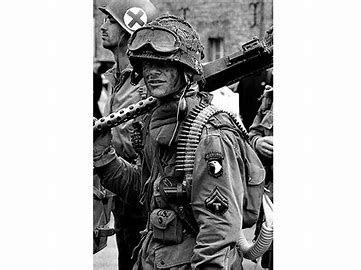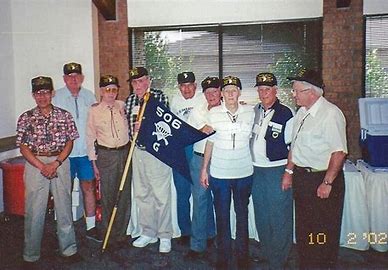
As the soft whir of helicopter blades pierced the skies over Carentan-les-Marais, France, soldiers from the U.S. Army’s 101st Airborne Division, known as the “Screaming Eagles,” descended to the ground, simulating an air assault as part of a powerful display.

The demonstration, which occurred in the same French town that their predecessors liberated during World War II, honored the 80th anniversary of D-Day while showcasing the division’s modern capabilities.

The demonstration in Carentan, a site where the 101st played a pivotal role in the Allied beach landings on June 6, 1944, was part of annual commemorations in the region.

It reflected not only a tribute to the sacrifices of those soldiers who fought for liberation but also emphasized the advancements in military technology and the continued commitment to the values of freedom and democracy.

Lt. Col. Erik Norman, the commander of 3rd Battalion, 187th Infantry Regiment, helped orchestrate the event, saying, “It’s worth highlighting how we have advanced since the early stages of airborne development.”

Unlike the paratroopers of the past, today’s 101st Airborne can rapidly deploy an entire brigade behind enemy lines by helicopter, a testament to the evolution of air assault techniques.

In a gripping display of force, 50 soldiers were rapidly unloaded from four helicopters, immediately breaking into a mock enemy camp. The air was filled with the mechanical hum of drones performing reconnaissance, and supplies were swiftly delivered by sling load from another helicopter.

It was a concise yet powerful demonstration of how far military operations have evolved since the days of World War II.

The D-Day airborne landings were a pivotal moment in history, with the 101st Airborne Division being less than two years old at the time. They played a crucial role in the success of the entire invasion, particularly in the seizure of Carentan, which connected the American landing beaches and created a defensive line against German counterattacks.

Maj. Gen. Brett Sylvia, commander of the 101st Airborne Division, highlighted the importance of maintaining the connection between the division and Normandy, which has evolved from simple wreath-laying to more active participation in commemorative events. In a poignant touch, 1st Lt. Jason Rogers reflected on the enduring link between the division’s history and its current role, emphasizing the importance of remembering and valuing the community in Carentan.

The demonstration was not only a nod to the past but also a firm statement in the present geopolitical landscape.

Following Russia’s invasion of Ukraine in 2022, members of the 101st Airborne Division were deployed to Europe to assure NATO allies and deter aggression, marking the division’s first European deployment in nearly eight decades.

Denis van den Brink, a consultant working with Carentan officials on D-Day events, captured the sentiment perfectly, “The division is still here, still protecting us in Europe. We want them to keep coming and reminding the people they liberated all those years ago.”

As veterans and current soldiers come together to commemorate such historic moments, the 101st Airborne Division stands as a bridge between the valor of the past and the sophisticated military strength of the present.

In the quiet town of Carentan, echoes of history resonate, and the “Screaming Eagles” continue to soar, symbolizing an unbroken chain of service and remembrance.
Relevant articles:
– 101st Airborne shows modern might with drill in French town freed by D-Day predecessors, Stars and Stripes
– D-Day – Operation Overlord Heritage Site, army.mil
– Normandy town liberated by the Allies welcomes US veterans before D-Day anniversary, Stars and Stripes
– Forgotten Fights: The 101st Airborne at Carentan, June 1944 by Author Mitch Yockelson, PhD, The National WWII Museum | New Orleans
